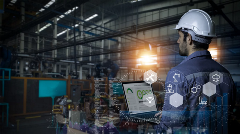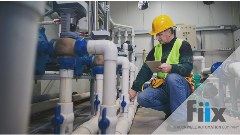4 Steps to Boost the Performance and Sustainability of Data Center Opertations

Improving data center performance while simultaneously shrinking the environmental footprint of its operation is a major challenge. Yet, developing sustainable methods to keep up with the world’s ever-growing appetite for data (and online everything) is essential to achieve decarbonization goals, whether driven by regulations or the organization.
There’s good news for data centers when it comes to sustainability. Longtime digital investments in always-on power have put data centers of all sizes in a great position to take advantage of the energy transition, improve performance and open new business models. A few additional steps can take them beyond efficiency so they can make a big impact on true data center sustainability.
So how can a data center enhance performance and reduce carbon footprint? Sustainability hinges on improvements to core operations (that reduce energy consumption) and integrating new energy sources.
Of course, improving cooling, heat utilization, airflow containment and the like will payoff for data centers of all types. Additional small changes can help reduce energy consumption further. For those operating remote or edge facilities, that can mean shutting systems down when they’re no longer needed in the evening or during weekends. And in hyperscale data centers, you can enable large, three-phase uninterruptible power supplies (UPSs) to operate in eco- or energy-saving modes to mitigate harmonics, correct power factor and balance loads for increased reliability and energy efficiency.
The point is: whether you’re reducing energy consumption or adding renewables and storage to mitigate power draw, you need infrastructure that reports in and enables real-time, data-driven insights. You cannot manage what you cannot see. So, understanding the energy coming in, consumption habits, available capacity and the resources being over or underutilized is important for energy optimization, growth (without new infrastructure) and sustainability.
Data center management is changing
A new study carried out by 451 Research/S&P Global Market Intelligence, The Intersection of Digital Transformation and the Energy Transition shows:
- New energy business models are key. Renewables, grid integration, and energy services are impacting how data centers manage their power needs.
- Efficiency and sustainability are driving data center digitalization. 50% of data center are looking to increase renewables and 47% are interested in increasing energy storage.
- Sharing power intelligence more broadly is a priority. while data centers are inherently digital by nature, 41% of data centers want to provide power intelligence to more people.
There are relatively modest changes to data center power infrastructure that can provide big opportunities to improve performance, advance sustainability and earn new revenue streams.
4 steps to boost the performance and sustainability of data center operations
- Leverage software to improve data center efficiency. By collecting and analyzing the right data, data centers can make decisions that optimize and accelerate their businesses. Our Brightlayer Data Centers suite includes software for things like data center infrastructure management (DCIM) and electrical power monitoring system (EPMS) so data center operators can know what’s happening across their facilities – both grey space and white space. Our software offers benefits like predictive health monitoring, alarm rationalization and power topology verification, while providing insights into IT power utilization and cooling reduction so operators can improve efficiency – a key imperative for sustainability.
- Get clear visibility into complex energy flows. Intelligent decision-making requires the right data to be made available to the right people. Today, there’s often a gap between the data people need to make the right decisions and the data that’s available. That’s because data is siloed in software applications such as building management systems (BMSs), building automation systems (BASs), DCIM, EPMS and information technology service management (ITSM) systems. To gain economies of scale, these systems need to be integrated so they work together symbiotically and ultimately provide a coordinated integration of actionable insights across the data center facility and its operation.
- Tap into more sustainable backup power options. Replacing a data center’s diesel gensets with modern and sustainable backup power options will reduce carbon footprint. For example, our grid-interactive EnergyAware UPS intelligently leverages connected energy storage to manage the flow of energy. The UPS optimizes energy use and reduces costs through demand response activities and supports the grid to allow a higher penetration of renewables. Hydrogen fuel cells, energy storage systems and extended battery systems also provide reliable, safe and sustainable emergency power options.
- Create new revenue streams by applying our data centers as a grid strategy. This approach enables flexible energy systems that can more effectively manage multiple energy sources, anticipate energy requirements and participate in grid programs. In other words, data centers can not only help to improve grid sustainability and stability but generate new revenue streams. With grid-interactive energy storage and UPSs, data centers can provide frequency containment and dispatchable power to the grid to help maintain power to the community when demand outpaces energy production. Microsoft is doing this today at its Dublin data center – connecting its lithium-ion batteries, which typically provide backup power for the data center, to the grid with our EnergyAware UPSs to help operators provide uninterrupted service when demand exceeds the supply generated by wind, solar and other renewable sources.
More than ever, digitalization of power infrastructure can help data centers reduce their carbon footprint, create new revenue streams, boost uptime and contribute to grid-stability for an ‘always on’ data center. Data center owners are recognizing the importance of addressing both the challenges and opportunities, and they positive impact they can deliver. In some cases, work is well underway on implementing the technologies needed to support these opportunities.
Find more information on industrial data center operations here. Talk to one of our specialists to find the best solutions for your facility below.
















